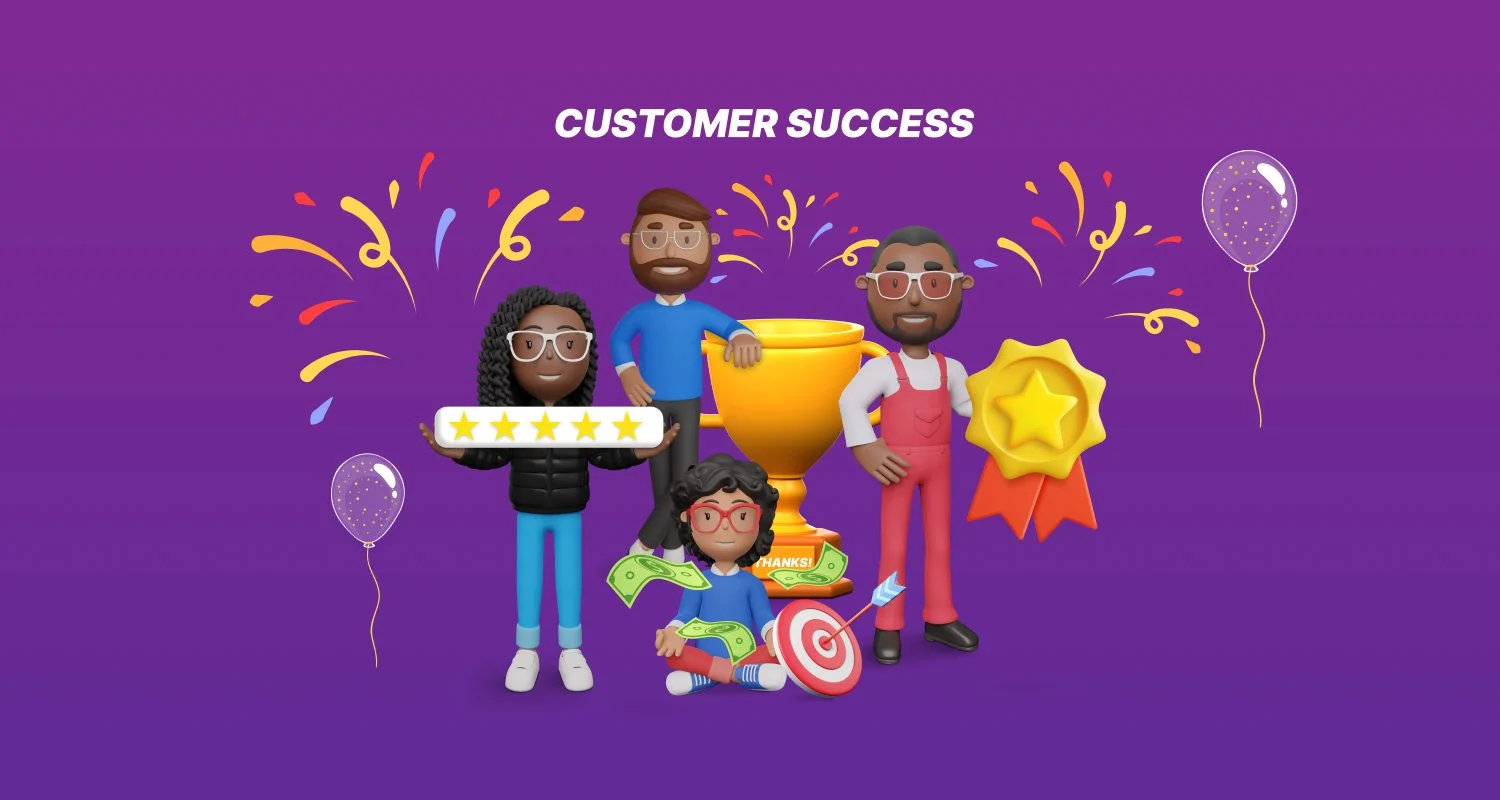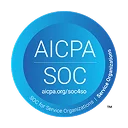According to Grand View Research, the global SaaS market reached $399.10 billion in 2024 and is projected to reach USD 819.23 billion by 2030, expanding at a 12.0% annual growth rate.
As competition intensifies, SaaS companies must go beyond product features and pricing; they need to deliver real value. That’s where SaaS customer success steps in.
By helping users achieve their goals and maximize product value, customer success becomes a strategic differentiator. It’s a win-win: customers enjoy better outcomes, and SaaS brands benefit from higher retention, loyalty, and long-term growth.
In this blog, we break down the essentials of SaaS customer success, what it is, why it’s critical, and how to apply it to boost retention, satisfaction, and growth.
What is SaaS customer success?
SaaS customer success is the measures taken by SaaS companies to ensure that their customers achieve their desired outcomes while using their software.
It goes beyond just solving problems; it’s about ensuring customers continuously gain value from the product throughout their journey.
In the SaaS customer success industry, it typically involves:
- Implementing a solid customer onboarding process sets users up for early success.
- Providing ongoing support to guide customers through challenges.
- Delivering continuous education through training, resources, and updates.
- Driving customer engagement to build strong, lasting relationships.
- Aligning product features with customer service goals and use cases
- Maximizing product value to ensure long-term satisfaction and retention.
How is SaaS customer success different from customer support?
In SaaS businesses, two key teams work to improve the customer experience: customer success and customer support. Though they may sound similar, they play very different roles in how customers interact with a product.
The table below highlights the key differences between customer success and customer support in SaaS, making it easy to see how each function contributes uniquely to the customer journey.
| Aspect | Customer Success | Customer Support |
| Definition | Proactive, strategic approach focused on helping customers achieve their desired outcomes | Reactive assistance provided to users when they encounter issues or have questions about a product or service |
| Primary goal | Ensure customers achieve desired outcomes | Resolve product-related issues |
| Focus area | Long-term value, adoption, and retention | Immediate problem-solving |
| Engagement timing | Continuous and strategic | On-demand, issue-triggered |
| Success metrics | Customer health, product adoption, renewals | Resolution time, customer satisfaction |
| Tools used | BI tools, onboarding flows, and success plans | Helpdesk systems, ticketing platforms |
Why customer success is the lifeline of SaaS growth
In the fast-paced SaaS industry, acquiring users is only half the battle; retaining and growing them is where true success lies.
According to Velaris, a well-designed customer success program can yield a 91% return on investment over three years.
That’s why customer success isn’t just a support function; it’s a strategic pillar for sustainable growth. Here are some of the key reasons why SaaS customer success is vital for businesses:
- Boosts customer retention: Proactive customer success strategies make users feel supported and valued, increasing customer satisfaction and reducing churn. When customers receive timely guidance, they’re more likely to stay loyal and renew their subscriptions.
- Enhances product value: By helping users fully understand and utilize the product, customer success teams ensure customers get the most out of their investment. Continuous feedback also helps SaaS companies refine features to better meet customer needs.
- Drives revenue growth: Happy customers don’t just stick around; they upgrade, expand, and refer others. This creates a steady revenue stream and reduces reliance on costly acquisition efforts, fueling long-term profitability.
- Strengthens customer relationships: Customer success builds trust through personalized engagement. By leveraging tools like BI software to understand customer behavior, SaaS companies can deliver tailored experiences that deepen loyalty and advocacy.
Key roles that power a customer success SaaS team
A well-structured SaaS customer success team ensures that users receive consistent guidance and support throughout their journey with the product. Each role contributes to building a seamless experience, from onboarding to ongoing engagement.
Here are the core roles to consider for SaaS customer success.
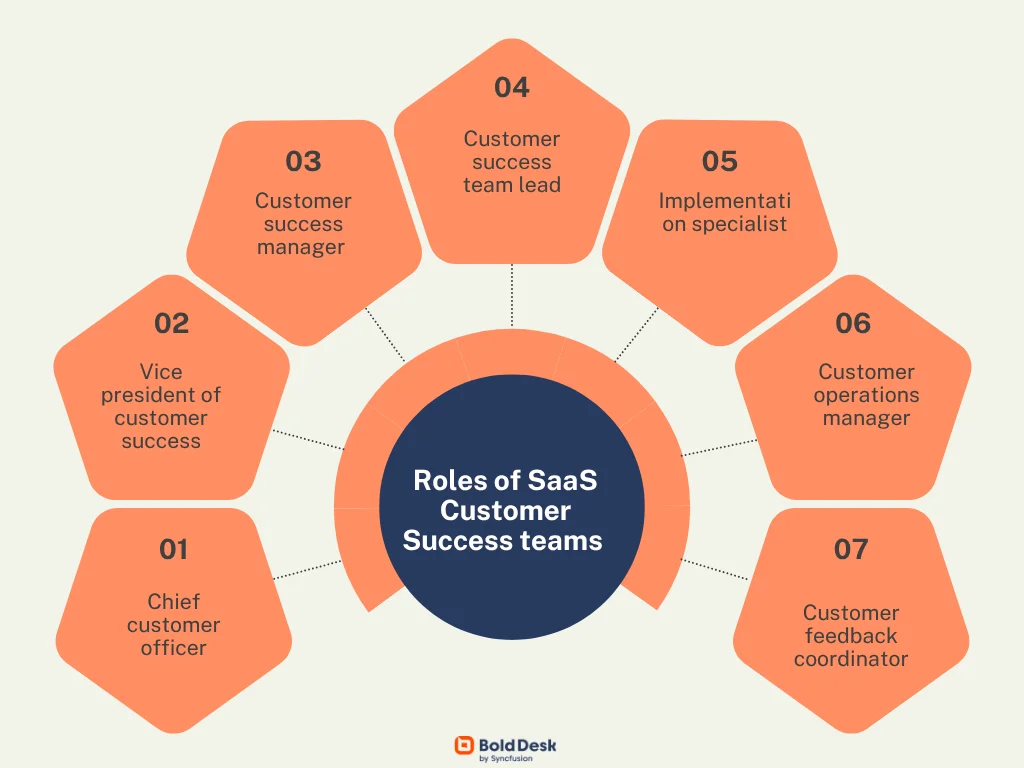
- Chief customer officer (CCO): A C-suite leader responsible for the overall customer experience. The CCO aligns customer success with company-wide goals and advocates for customer needs across departments like product, engineering, and sales.
- Vice president of customer success: Focuses specifically on the customer success function. This role defines strategy, sets performance metrics, and leads hiring and team development to ensure scalable success operations.
- Customer success manager (CSM): The frontline of customer success. Customer success managers work directly with customers to understand their goals, provide onboarding support, offer training, and ensure ongoing satisfaction. They often manage renewals and identify upsell opportunities.
- Customer success team lead or manager: Oversees the daily operations of the customer success team. They coach CSMs, monitor performance, and ensure the team’s efforts align with broader business objectives.
- Implementation specialist (Onboarding manager): Supports new customers during the onboarding phase. They help with account setup, data migration, and product training to ensure a smooth start and early value realization.
- Customer operations manager: Manages the systems and processes behind customer success. This role ensures strategic planning, data tracking, and smooth execution of customer experience initiatives.
- Customer feedback coordinator: Gathers and analyzes customer feedback from surveys, support tickets, and product usage data. Shares insights with internal teams to help improve the product, enhance user experience, and align services with customer expectations.
Proven SaaS customer success best practices you can’t miss
In the world of SaaS, getting users to sign up is just the beginning. The real challenge and opportunity lies in helping them succeed with your product.
To build lasting customer relationships and drive meaningful engagement, SaaS companies must adopt a proven SaaS customer success strategy that goes beyond basic support.
Below are some of the most effective best practices for customer success in SaaS.
Understand your customer’s objectives
Customer success starts with a deep understanding of what your customers want to achieve. During onboarding, hold strategic meetings to align your team with the customer’s goals. This sets the stage for a tailored experience that drives value.
As your customers evolve, so do their goals. Regular check-ins and feedback surveys help you stay aligned with their changing needs and ensure your product continues to support their success.
Track and measure customer success metrics
Start by identifying what success means for your customers and your business. Without clear metrics, you can’t measure progress or optimize your strategy.
The following are a few metrics for SaaS customer success:
- Customer health score: A combined score that reflects a customer’s overall engagement, product usage, and satisfaction, used to predict retention or churn risk.
- Net promoter score (NPS): Measures how likely customers are to recommend your product to others, indicating overall satisfaction and brand loyalty.
- Customer churn rate: The percentage of customers who stop using your product over a given period. Lower churn means better customer success.
- Customer lifetime value (CLV): Estimates the total revenue a customer will generate during their relationship with your company.
- Product adoption rate: Tracks how quickly and effectively customers start using key features of your product.
- Renewal rate: Measures how many customers renew their subscriptions, an indicator of satisfaction and long-term value.
- Customer satisfaction score (CSAT): Captures how satisfied customers are with a specific interaction or overall experience, usually through quick surveys.
- Time to value (TTV): The time it takes for a customer to start seeing value from your product after onboarding.
Create a seamless onboarding experience
According to Precursive, 82% of enterprise organizations see onboarding as a key driver of value, making it essential to design a seamless process that helps customers get started and use your product effectively.
Onboarding is the first step in the customer journey. A smooth process ensures customers quickly realize value and reduces early churn.
Here’s how you can implement SaaS customer success effectively:
- Provide step-by-step guides and video tutorials for easy learning.
- Offer personalized walkthroughs for enterprise clients.
- Automate onboarding emails for smaller accounts to maintain scalability.
Segment customers for tailored engagement
Customer success isn’t one-size-fits-all. Different customers have different needs, and segmentation ensures you deliver the right level of support.
Customer segmentation allows you to prioritize resources and personalize engagement, ensuring every customer feels supported without overwhelming your team.
Use dynamic segmentation based on real-time data, like usage trends, to adjust engagement strategies as customer needs evolve.
Foster continuous communication
Customer success is an ongoing relationship, not a one-time interaction. Regular customer communication keeps them engaged and aligned with your product’s value.
Ways to stay connected:
- Quarterly business reviews
- Webinars and product updates
- Feedback surveys
Automate touchpoints for low-touch accounts while maintaining personalized outreach for high-value customers.
Invest in customer education
Empowered customers are successful customers. Education reduces support tickets and helps customers extract maximum value from your product.
Educational resources include:
- Knowledge bases and FAQs
- Community forums
- Self-service tutorials
Regularly update educational content to reflect new features and best practices, and promote it through multiple channels.
Continuously improve your product
Regular updates and feature enhancements show customers that your product is evolving with their needs. Communicate changes clearly and offer training to help customers adapt.
Customization and flexibility in new features allow customers to tailor the product to their unique workflows, boosting satisfaction and retention.
Top SaaS customer success tools to power your strategy
Choosing the right tools can make all the difference in how effectively your customer success team supports users and drives engagement.
Below are some of the best customer success tools SaaS businesses can consider integrating into their tech stack.
Customer relationship management software (CRM)
A customer relationship management (CRM) tool helps SaaS companies keep all their customer data in one place, organize it into useful segments, and keep contact details updated.
It also connects customer success and support teams so they can work together smoothly on one platform.
A contact management (CRM) also empowers customer success teams to:
- Keep a history of all customers’ email interactions.
- Track every support ticket conversation and progress.
- Access comprehensive records of all customer communications.
By responding directly within the system, Customer service managers gain a holistic understanding of each customer’s journey, thereby enhancing their ability to provide effective support.
Help desk ticketing software
Help desk ticketing software is an online customer service tool used to aid and perform support operations. A help desk ticketing system helps customer success teams in the following ways:
- Automatically converts inquiries or requests that customers submit from varying communication channels to tickets.
- Automates and helps optimize the workflow of customer success teams.
- Automatically categorizes, prioritizes, and routes the new tickets to the right support agents to handle the issues.
Knowledge base software
Knowledge base software is a tool for creating, managing, and sharing information in a systematically arranged and searchable format.
It works as a customer self-service repository of information where SaaS customers can find guides on how to make their work easier or solve issues on their own.
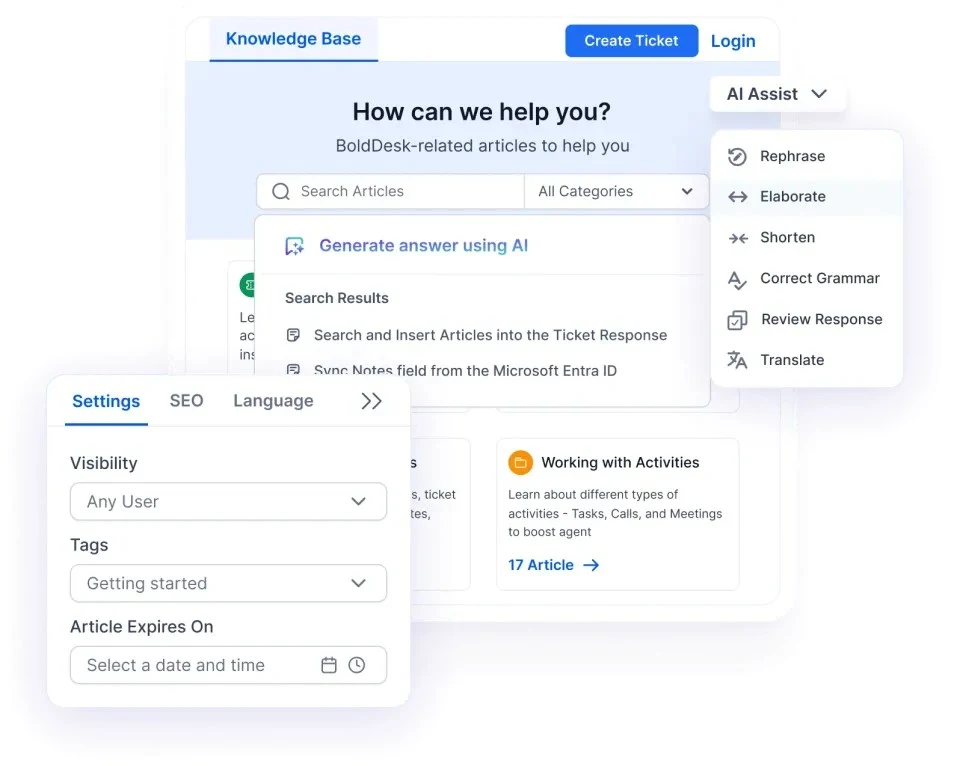
A knowledge base can include:
- FAQs
- Troubleshooting articles
- Advanced search functionality
- Step-by-step product guides and tutorials
- Customer support team contact options
- A straightforward knowledge base self-service portal configuration
Master SaaS customer success for long-term growth
Customer success doesn’t happen by chance; it’s built through the right mindset, the right team, and the right tools.
Prioritizing SaaS customer success means delivering real value through your product and empowering your team with the resources they need to support users effectively.
We invite you to explore BoldDesk, a powerful support platform designed to elevate SaaS customer success.
With built-in features like ticket management, automated workflows, and customer feedback tracking, BoldDesk helps your team respond quickly, resolve issues efficiently, and stay aligned with customer needs, all from one unified dashboard.
Have a question or need more info? Reach out to us anytime, and feel free to drop a comment below. We’d love to hear your thoughts!
Related articles
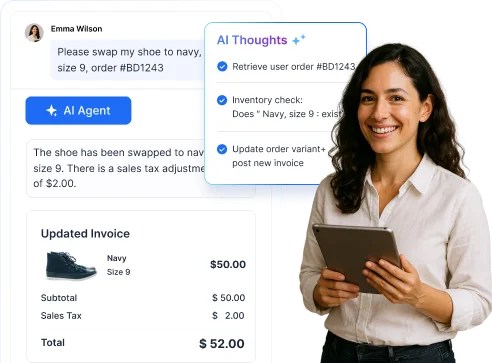


















 Email Ticketing System
Email Ticketing System Shared Inbox Software
Shared Inbox Software Multi Brand Help Desk
Multi Brand Help Desk Internal Help Desk Software
Internal Help Desk Software Trouble Ticketing Software
Trouble Ticketing Software Mobile Help Desk
Mobile Help Desk 









